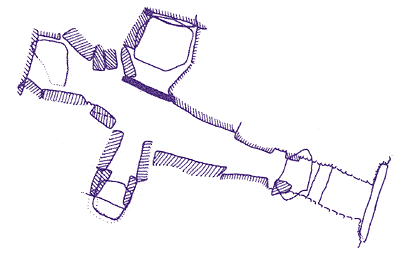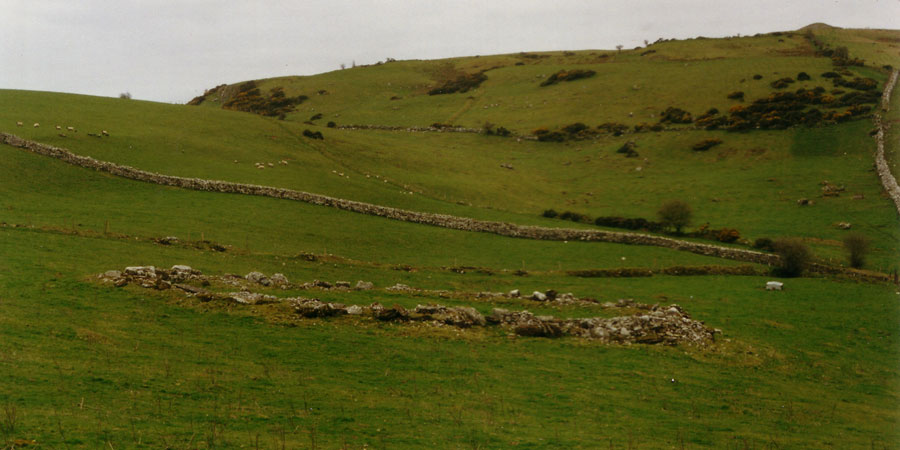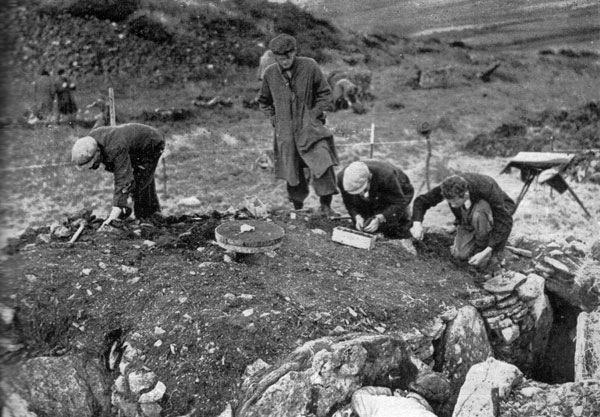Conwell's report on Cairn H
The three chambers were found filled with an indiscriminate mixture of stones, broken bones, and earth; the latter in a soft, stiff, retentive state, although the weather had been previously very fine. This mixture was picked and removed with great care; and in it were obtained, apparently without having been placed there in any definite order, one end of a bone bodkin; one half of a bone ferrule; six pieces of bone pins; one tine of an antler, three inches long; fourteen fragments of very crude brown earthenware or pottery, evidently portions of urns, much blackened by fire, particularly on the inside surface; ten pieces of flint; upwards of 200 sea shells, principally limpet and cockle shells, in a tolerably perfect state of preservation, and 110 other shells in a broken state; eight varieties of small lustrous or shining stones; upwards of 100 white sea pebbles, and about sixty others of different shades of colour, and all of various sizes.

At the back of the western chamber was found a small brown stone ball, and just inside its entrance, about two-thirds of a circular flat bone disc, about six inches in diameter, being the greater portion of one of the intercostal bones inserted between the vertebrae in the skeleton of a whale.
Underneath the stone basin in the northern chamber were found imbedded in damp earth, and mixed with small splinters of burnt bones, six balls, the largest about an inch in diameter, but in so soft a state that they could scarcely be touched without injuring them.
Five of these are white carbonate of lime, and the sixth is a dark-coloured ball of the same material, but made from some rock of a coralline structure. An account of the probable origin and use of these balls will be found in the description of Cairn L, in which eight similar ones were discovered.
In the southern chamber, and about the entrance to it, while carefully picking and removing a miscellaneous collection of stones, broken bones, and stiff retentive earth with which it had become filled up, we obtained articles of glass, amber, bronze, and even iron; together with the remains of a large number of bone implements, the names and uses of which have not yet been satisfactorily determined.
Of glass, we collected three: small beads, of different shapes, one green, and two blue; two fragments, or splinters of glass; a tapering trumpet-shaped piece of hollow glass, one inch in length, and resembling in appearance a shark's tooth or a Rupert's drop.








